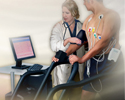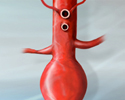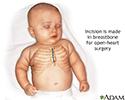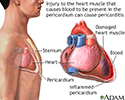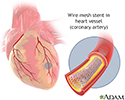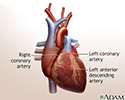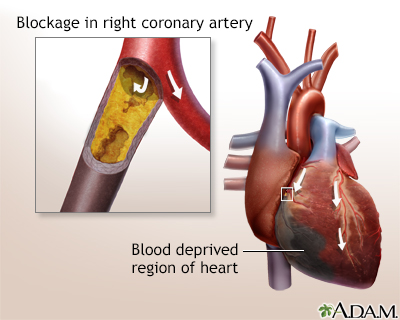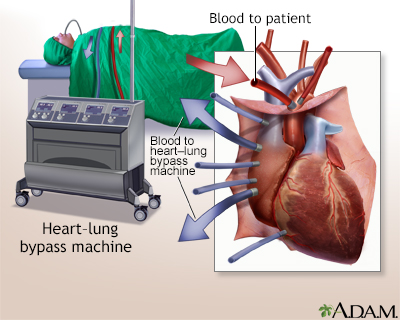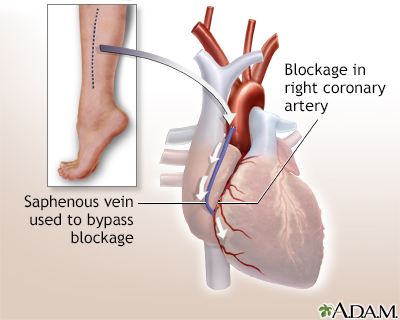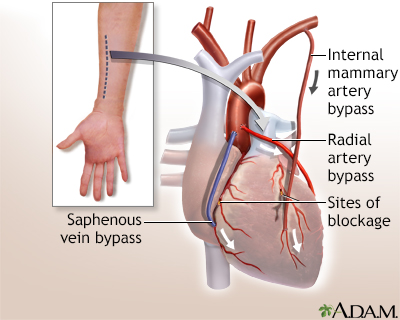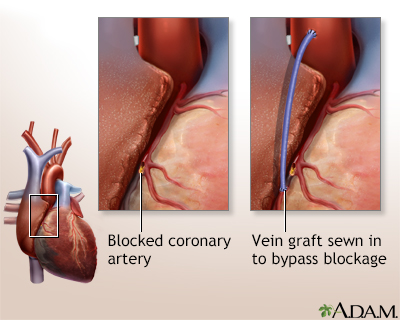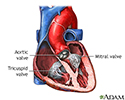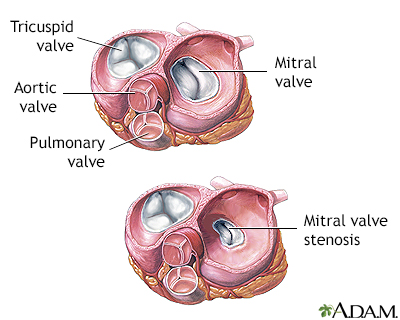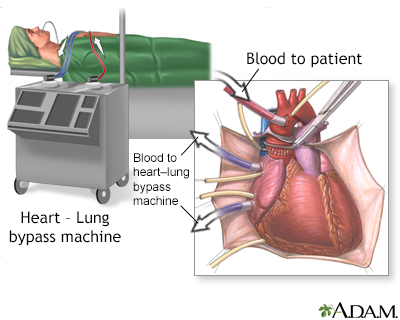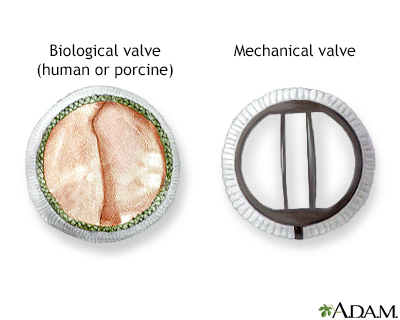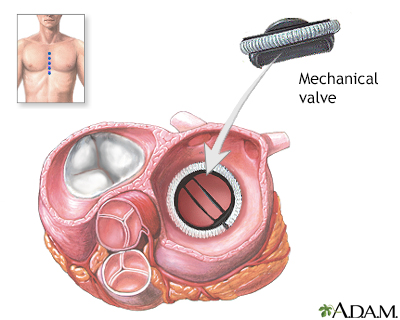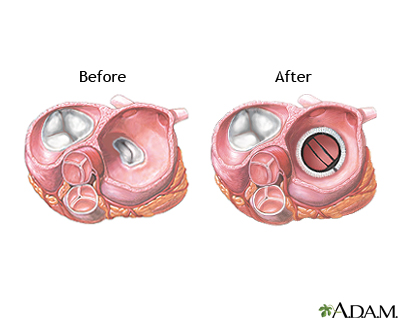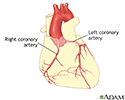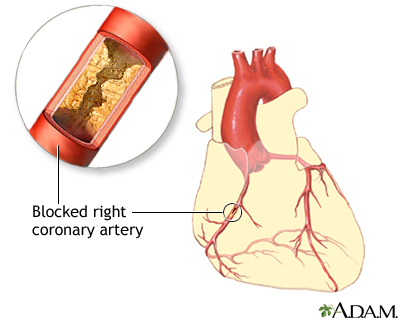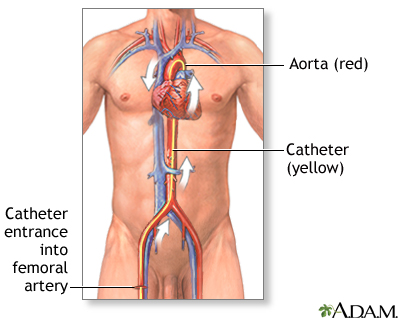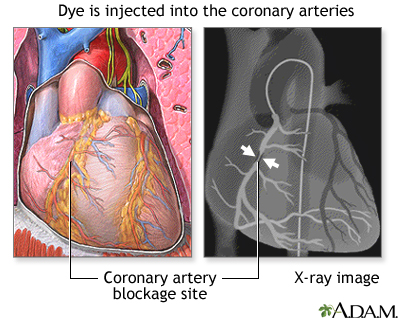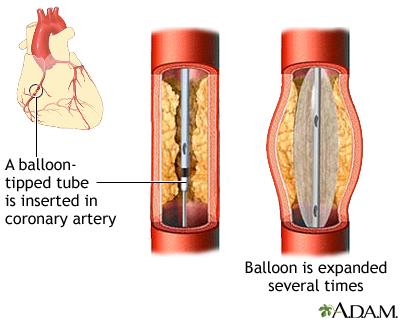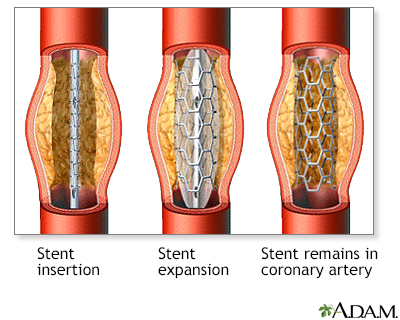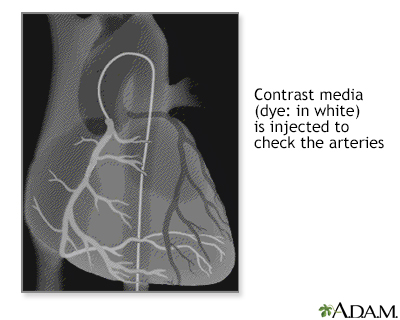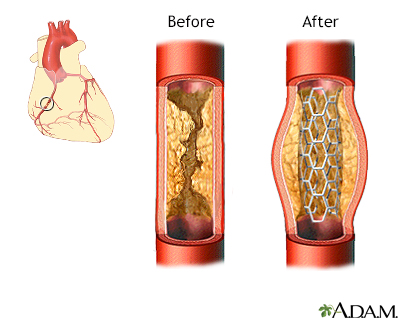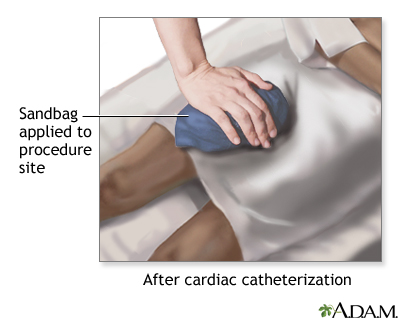Open heart surgery
Heart surgery - openHeart surgery is any surgery done on the heart muscle, valves, arteries, or the aorta and other large arteries connected to the heart. The term "open heart surgery" means that you are connected to a heart-lung bypass machine, or bypass pump during surgery. Your heart is stopped while you are connected to this machine. This machine does the work...
The Basics
Tests for Open heart surgery
A Closer Look
Heart attack - Animation
Heart attack
Animation
Nuclear stress test - Animation
Nuclear stress test
Animation
Abdominal aortic aneurysm - Animation
Abdominal aortic aneurysm
Animation
Infant open heart surgery
During open-heart surgery an incision is made through the breastbone (sternum) while the child is under general anesthesia.
Infant open heart surgery
illustration
Post-MI pericarditis
Post-MI pericarditis is inflammation of the pericardium, the sac-like covering of the heart. Any previous injury to the heart muscle can cause pericarditis. Incidences of pericarditis are associated with Dressler syndrome, after a heart attack, open heart surgery, and may also follow stab wounds to the heart or blunt chest trauma. Pain occurs when the inflamed pericardium rubs on the heart.
Post-MI pericarditis
illustration
Coronary artery stent
An intraluminal coronary artery stent is a small, self-expanding, stainless steel mesh tube that is placed within a coronary artery to keep the vessel open. It may be used during a coronary artery bypass graft surgery to keep the grafted vessel open, after balloon angioplasty to prevent reclosure of the blood vessel, or during other heart surgeries.
Coronary artery stent
illustration
Heart bypass surgery - series
Presentation
Heart valve surgery - series
Presentation
Coronary artery balloon angioplasty - series
Presentation
Heart attack - Animation
Heart attack
Animation
Nuclear stress test - Animation
Nuclear stress test
Animation
Abdominal aortic aneurysm - Animation
Abdominal aortic aneurysm
Animation
Infant open heart surgery
During open-heart surgery an incision is made through the breastbone (sternum) while the child is under general anesthesia.
Infant open heart surgery
illustration
Post-MI pericarditis
Post-MI pericarditis is inflammation of the pericardium, the sac-like covering of the heart. Any previous injury to the heart muscle can cause pericarditis. Incidences of pericarditis are associated with Dressler syndrome, after a heart attack, open heart surgery, and may also follow stab wounds to the heart or blunt chest trauma. Pain occurs when the inflamed pericardium rubs on the heart.
Post-MI pericarditis
illustration
Coronary artery stent
An intraluminal coronary artery stent is a small, self-expanding, stainless steel mesh tube that is placed within a coronary artery to keep the vessel open. It may be used during a coronary artery bypass graft surgery to keep the grafted vessel open, after balloon angioplasty to prevent reclosure of the blood vessel, or during other heart surgeries.
Coronary artery stent
illustration
Heart bypass surgery - series
Presentation
Heart valve surgery - series
Presentation
Coronary artery balloon angioplasty - series
Presentation
Open heart surgery
Heart surgery - openHeart surgery is any surgery done on the heart muscle, valves, arteries, or the aorta and other large arteries connected to the heart. The term "open heart surgery" means that you are connected to a heart-lung bypass machine, or bypass pump during surgery. Your heart is stopped while you are connected to this machine. This machine does the work...
The Basics
Tests for Open heart surgery
A Closer Look
Open heart surgery
Heart surgery - openHeart surgery is any surgery done on the heart muscle, valves, arteries, or the aorta and other large arteries connected to the heart. The term "open heart surgery" means that you are connected to a heart-lung bypass machine, or bypass pump during surgery. Your heart is stopped while you are connected to this machine. This machine does the work...
The Basics
Tests for Open heart surgery
A Closer Look
Review Date: 4/16/2023
Reviewed By: Mary C. Mancini, MD, PhD, Cardiothoracic Surgeon, Shreveport, LA. Review provided by VeriMed Healthcare Network. Internal review and update on 02/03/2024 by David C. Dugdale, MD, Medical Director, Brenda Conaway, Editorial Director, and the A.D.A.M. Editorial team.

